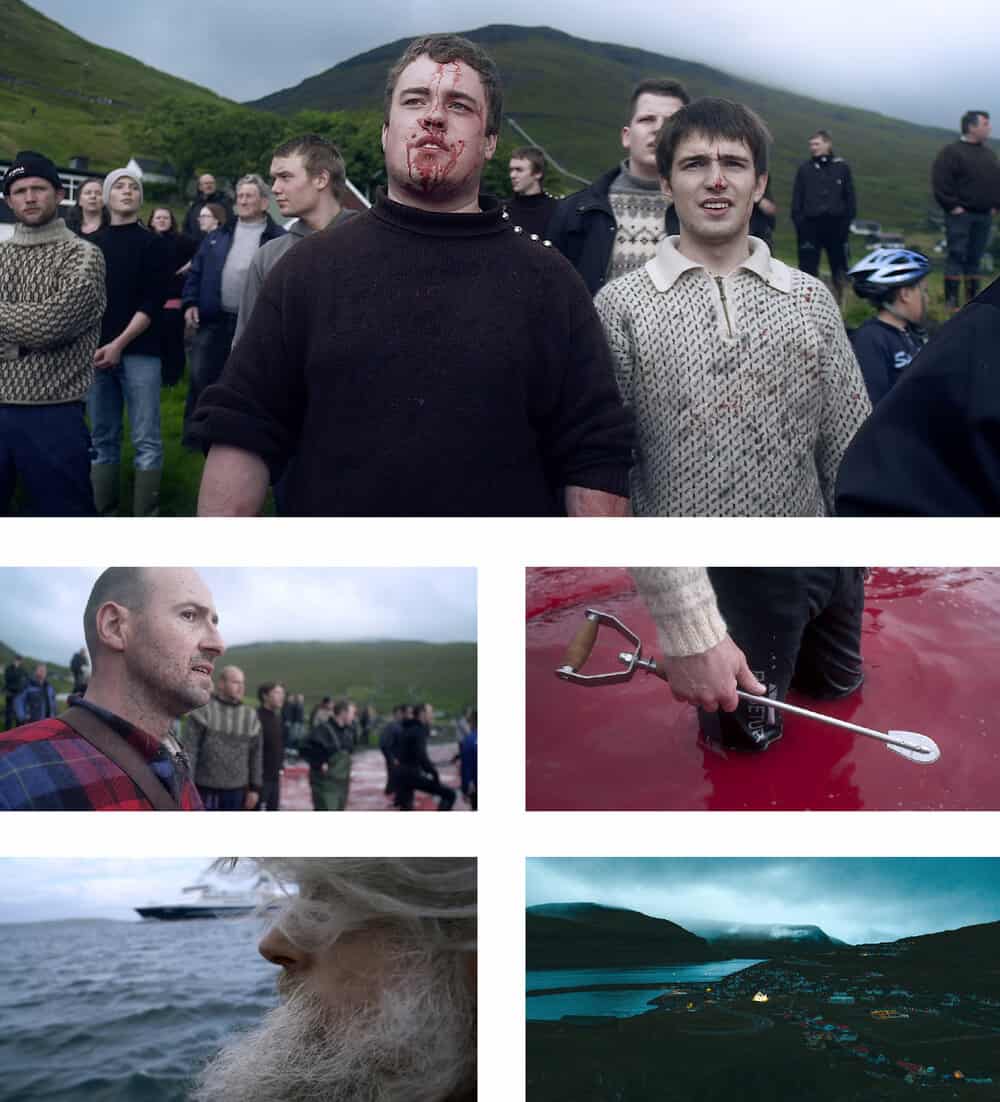Your cart is empty
WORDS BY Byron Pace
PHOTOS BY Derek Malou & Mike Day
DENMARK | FAROE ISLANDS
The battle drums of the north Atlantic Ocean groan loudly, stirring from the belly of warm currents pushing up to the Arctic, clashing unapologetically with the Norwegian Sea as these two mighty bodies of water meet the Faroes. The sprawling oceans are the sustaining lungs of this string of 18 major islands, breathing life into this seafaring nation. Myth and magic are embodied in the swelling waters. They offer up and take souls with equal indifference; these people are forged from the cauldrons of the deep.
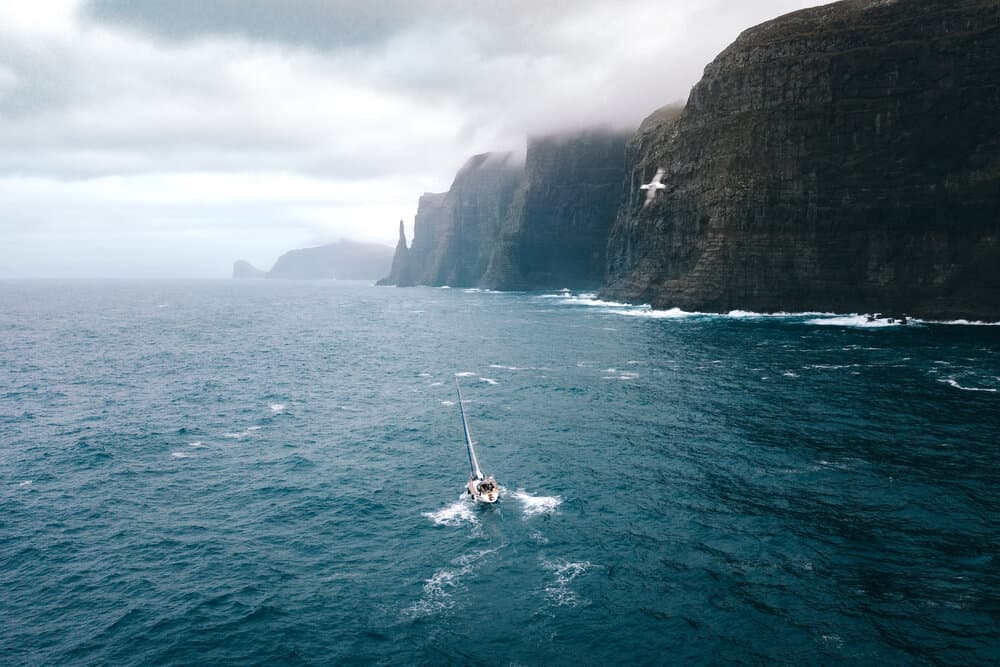
The rolling waves harbor respect for what the ocean gives, and what it offered the forefathers of this land. Crashing whispers chant secrets along the shorelines, riling the soul and imagination to a simpler life, attuned to the rewards of land and sea. Early Norse settlers’ lives flowed with the rise and fall of nature; the knowledge and skills they inherited were their greatest asset in this hostile, yet breathtakingly beautiful place. But these are not the islands of today. From plastic contamination to rising sea temperatures and the accumulation of mercury in the food chain, the Faroese culture, once so deeply at one with nature, faces a less-than-certain future.
The Vikings were not the first to arrive in the Faroes. Archaeologists have found early cereal pollen from domesticated plants from around 300 CE, but the current native population of the islands heralded from Viking explorers, landing circa 800 CE. The Faroese language evolved from Old West Norse tongue, and even today, their historic lineage is guarded as an essential element of who they are as people.
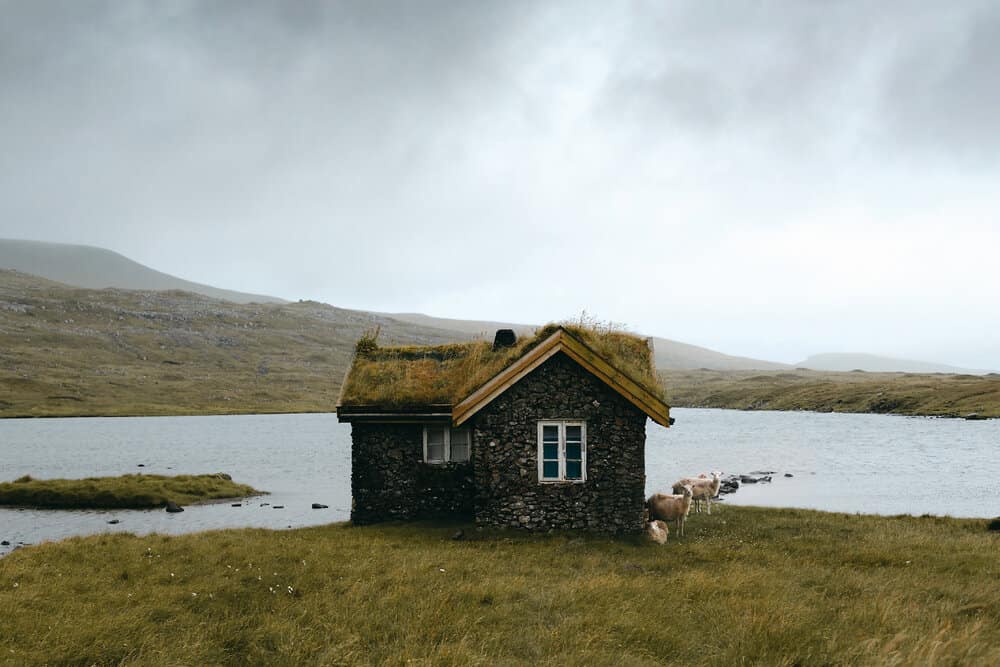
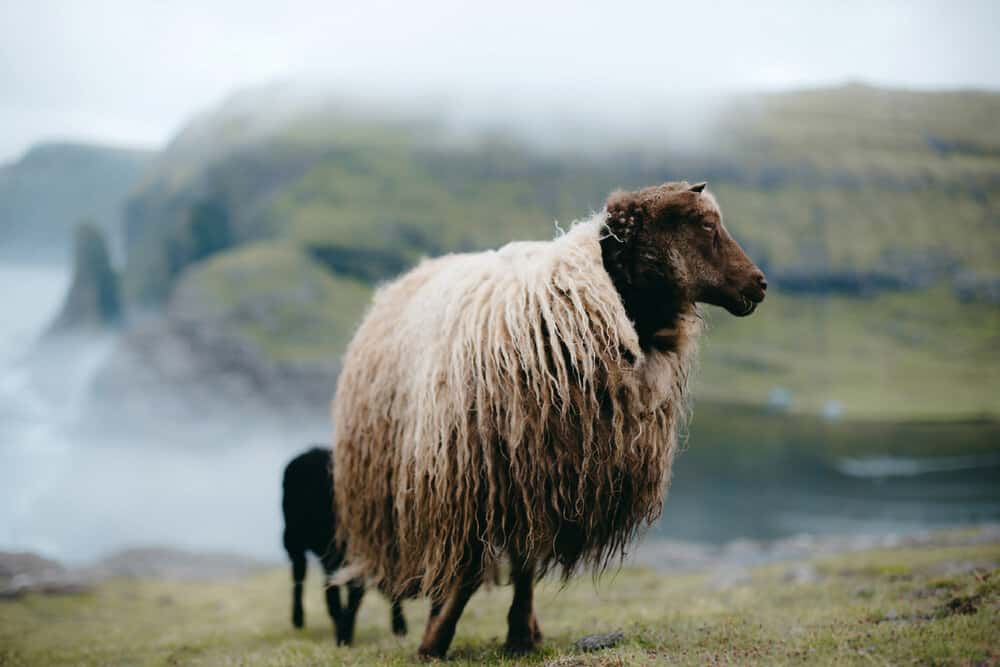
Culturally, the Faroese have held on firmly to their ties with the land, air and sea, and although modern conveniences and food imports have undoubtedly diluted the necessity of these old ways, there are few communities left that embrace natural harvest to the same extent. Most notoriously, this Danish territory is one of only five countries in the world that still hunts whales, an activity which sparks great controversy every year, and courts media attention from around the world. Interestingly this list includes the U.S.A., but only in Alaska, where limited numbers are hunted for native, cultural use. On the surface, this is a simple story, but as filmmaker Mike Day discovered, the web of underlying implications from this seasonal whale hunt encompasses international environmental issues.
The film Mike set out to make was focused on hunting traditions, but as with many great documentaries, the story which unfolds from spending time on the ground is what makes it come to life. The catalyst for venturing to the Faroes came from a previous documentary, The Guga Hunters of Ness. One of two legal gannet harvests left in the world, it was a tradition that had only been documented once before, 50 years previously. The only recorded gap where no hunting took place was during World War II. Obtaining permission to be present was met with resistance, something Mike would face again when seeking access from the Pilot Whale Hunting Association for his feature documentary in the Faroes. Eventually, Mike was granted rights to film, on the condition that he made his way to the island of Sula Sgeir independently. With his brother and a couple of friends, he skippered a sailing boat to the small island off the Isle of Lewis, and captured this historic hunt for guga, possible today only by special exemption from European regulations. Through the process of making this film, Mike established contacts that would eventually lead to four years of filming in the Faroes. His resulting documentary, The Islands and The Whales, has won global acclaim, boasting numerous awards including the HotDocs Emerging International Filmmaker Award, the DOC NYC Grand Jury Prize, and a Peabody Award, as well as being nominated for Best Documentary at the 2018 Emmy Awards.
Gaining acceptance as an outsider in the Faroese was Mike’s first obstacle. He may have faced stormy seas on route to Sula Sgeir, but it took a hefty glass of schnapps and a sheep’s sphincter on a plate before he was allowed into the heart of the Faroese community.
This may be a remote nation, seemingly a world away from the industrial growth of the continental mainland, but it soon became apparent that every facet of their cultural heritage was being affected by outside influences. One of the primary historical food sources of the Faroese was sea birds, which were much more consistent and guaranteed than whales. Today, for certain species, this harvest has entirely ceased. The drifting gulf stream and warming waters have pushed the food sources of many birds farther north following colder waters, further contributing to the severe decline in populations. Where 200,000 puffins were once hunted annually, none are now harvested. The remaining birds today rarely breed, the availability of sand eels too scarce to rear their young. Guillemot populations have also declined markedly, falling from 300,000 in the 1960s to less than 80,000 today. That decline is repeated for most of the species here.
“This may be a remote nation, seemingly a world away from the industrial growth of the continental mainland, but it soon became apparent that every facet of their cultural heritage was being affected by outside influences.”
In the documentary, a local taxidermist suggests that too many puffins were killed in years gone by. It is hard to know how much that can be attributed to the decline, or more accurately, how it affected the robustness of the population’s ability to adapt to environmental changes. What’s clearly evident, however, is that almost all seabirds have been touched by the reduced availability of prey species, and potentially the burden of plastic contamination in the ocean. Between 10 and 15 fragments of synthetic material can be found in almost every bird the Faroese harvest. These particles accumulate high concentrations of pollutants found in the ocean, including mercury and polychlorinated biphenyls (also known as PCBs, banned in the late 1970s but still persistent in our oceans). It is very possible that some birds may be dying directly from ingestion, or from resulting toxicity burdens.
One of the scenes that stuck with me from the documentary was the community harvesting of young gannets from the cliff faces around the islands. This was historically an important source of food right along the coastal settlements of the British Isles, but has long since disappeared from these rural communities. Unlike many other species in the Faroes, gannets have benefited from the warmer waters along the coast, as mackerel populations have continued to increase — their primary prey species.
In the cool, gray hue of failing light, weather-worn men marched along the clifftops, their lights flickering in the darkness. Slinging themselves toward the watery abysses below, an arm-thick rope supported each soul down the rocky faces, as the same woven fibres had done for 30 years. When Mike joined on the first evening, he became the first outsider to document the harvest. This old-world snapshot conjures an appreciation for the efforts and collaboration required to survive, along with an uncomfortable underlying feeling born from the rawness of dispatching juvenile birds from their nests.
For people who rely on the bounty of nature, it is inherently in their interest to ensure the long-term proliferation of the resource. This may be in self-interest, but it is a powerful catalyst. It’s not lost on the Faroese, that the historic harvests they once enjoyed may soon be confined to tales of old, as they observe the painfully apparent, precipitous declines of many species their ancestors had relied on.

Capturing the whale hunt itself was almost impossible to plan, and even positive sightings from fishermen going about the daily business didn’t necessarily result in a successful pod beaching. The images conjured with the notion of whale hunting are of vast vessels and harpoons, which do indeed still exist in some countries, but this is not the story of a traditional Faroese whale hunt.
The primary targeted species in the Faroes is the long-finned pilot whale, which are the second-largest member of the dolphin family; the orca, or killer whale, being the biggest. Size varies between sexes, with males weighing up to 2300kg (5,000 lbs), measuring 6.7m (22 feet) long. The yearly average
harvest of 800 whales comes from the eastern North Atlantic ocean population of an estimated 778,000. This is regarded as sustainable, with the species currently listed of Least Concern by the IUCN. There is currently insufficient data to allow an accurate global population estimate.
The method used for hunting is known as a Grindadrap. This requires vast community participation and was once practiced all across the North Atlantic. It’s a complex operation, drawing people from across the Faroes, as boats of all sizes join in to drive a located pod, herding the tiring pilot whales into an increasingly restricted area, before pushing them into the shallows of the shingle shoreline. It is without question the most iconic, yet harrowing sequence of the documentary, as splatters of blood-stained ocean swirl between the writhing bodies, the commotion and the people’s elation and excitement palpable. In their sodden, claret hands, grappling hooks are driven through skin and blubber, dragging quivering bodies farther up the beach. The remaining members of the pod thrash in a helpless, contorted final effort as the last spines are severed. Slowly, the waters calm, people disperse, and the lapping, red wash of sea fades. The hunt is over.
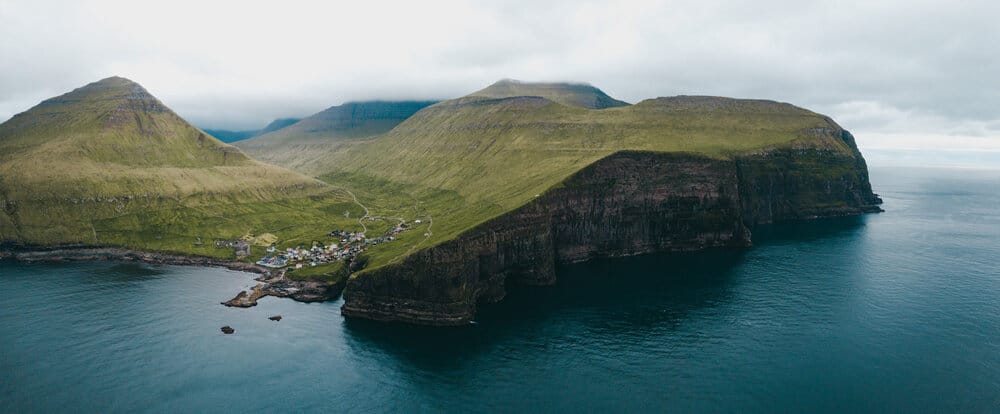
“In their sodden, claret hands, grappling hooks are driven through skin and blubber, dragging quivering bodies farther up the beach.”
This yearly harvest of around 500 tons of meat and blubber is shared among the community, with portions defined by complex rules of participation. This represents 30% of the total meat intake for the Faroes — a food source which would likely have to be replaced with imported protein, should the whale hunting ever be stopped.
The opposition to this has spawned from an increasingly unpopular global view of whale hunting as many species’ populations continue to decline, and questions are raised on the grounds of animal welfare. It is unsurprising to find Sea Shepherd a persistent presence when the whale hunting season begins, determined to see all whale hunting stopped around the world. However, the story is much more nuanced and complicated than it first appears.
For a time, it seemed that whale hunting in the Faroes was dying out. The younger generation had lost interest in these old ways, and there was a feeling that this part of their culture would slip away with the passing of the older generation. With the arrival of Sea Shepherd and global pressures to stop the practice, this changed. In the words of one local, it “awoke the interest of our young people.” In defiant retaliation at the notion of being forced to give up this historic element of their cultural identity, the number of those attending whale hunts began to increase. Cultural inertia is always hard to turn, and such efforts are rarely successful when imposed by outside agents. Quite possibly, the presence of Sea Shepherd breathed life into something that would have slowly been confined to history.
In the background of declining bird populations, plastic contamination and global pressures on banning whale hunting sits an underlying, opposing narrative to the cultural desire of the Faroese to continue harvesting whales: the high concentrations of mercury contained in whale meat is slowly killing them.
Impacts on our oceans from pollution and industry have been a topic increasingly brought to the fore alongside warming global temperatures. This includes elevated levels of mercury far above the background rates that occur naturally. Current trends indicate the concentration of mercury in our oceans will double in the next 10 years. The largest single source is the burning of fossil fuels, with coal being by far the biggest contributor today. The element of mercury itself is not as much of a concern as monomethyl mercury, which is formed from mercury deposits by the action of microbes that live in aquatic systems. In this form — a mercury atom attached to a methyl group — it becomes a bio-accumulative, toxic pollutant, which can build in the food chain in ever-increasing concentrations; first diffusing into plankton, then consumed by other organisms, which in turn are predated on through the complexities of oceanic food webs. As a result of this, there is a tendency for higher mercury concentrations in older, larger animals. Testing of whale meat by researchers at the University of Hokkaido in Japan, a country which
still actively hunts and eats whale, showed an average concentration in whale livers of 900 times the government’s regulated limit for safe consumption. While levels in the meat itself were lower, some 2.5 to 25 times the limit, the neurological and morphological effects of consuming contaminated whale meat have become very clear.
For 25 years, local toxicologist Dr. Pál Weihe has been testing mercury concentrations and monitoring the effects on the Faroese community. Although large-dose mercury poisoning had been well documented, there had never been a study looking at long-term, low-dose exposure. His research showed that by the age of 14 years old, cognitive impairments were being recorded in the population, with a doubling of mercury levels relating to a reduction in childhood development, the equivalent of a month of cognitive learning. Children were being born with 40 times the background level of expected mercury in their system, with the older community members experiencing more than two times the rate of heart complications and Parkinson’s disease — two symptoms associated with long-term mercury poisoning. Dr. Pál Weihe has spent most of his career trying to raise awareness of these health implications, but the lack of acute issues related to low-dose exposure had made it hard to convince the local communities to give up, or even reduce their whale meat consumption.
As we discover through the documentary, today there seems to be a growing acceptance among the younger generations that there are very real risks associated with eating whale meat. Umbilical cord tests on newborns have shown a large reduction in mercury, indicating that locals are beginning to understand the severe implications for their children’s early development. This clash of cultural identity and acknowledgement of science is a new challenge for the Faroese, one they will have to wrestle with as they cling on to what makes them who they are in a world changing so rapidly. Most of these impacts are out of their control, even if they bear them more acutely than most.
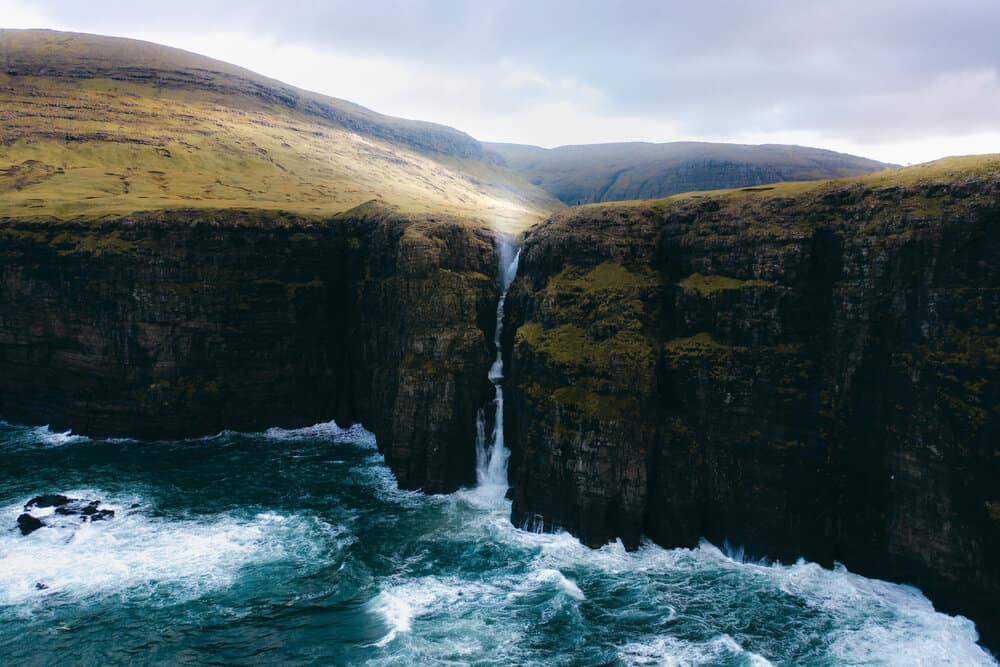
The Islands and The Whales truly is a ground-breaking documentary, blending art and cinema with honest, authentic storytelling. It elevated Mike Day as one of the great modern documentary makers and showed the world how far-reaching and complicated the web of our actions can be. In the homes and communities of the Faroese archipelago, they are shouldering the burden of our historic global indifference to our impact on the planet. They are torn between grasping onto the fading, brittle fabrics which define them as people, and the very stark reality that they can no longer look fully to the ocean as their ancestors once did.
The Islands and the Whales is available to watch online on the following websites:
– vimeo.com/ondemand/gugahunters
– facebook.com/intrepidcinema
– intrepidcinema.com
– vimeo.com/ondemand/theislandsandthewhales
